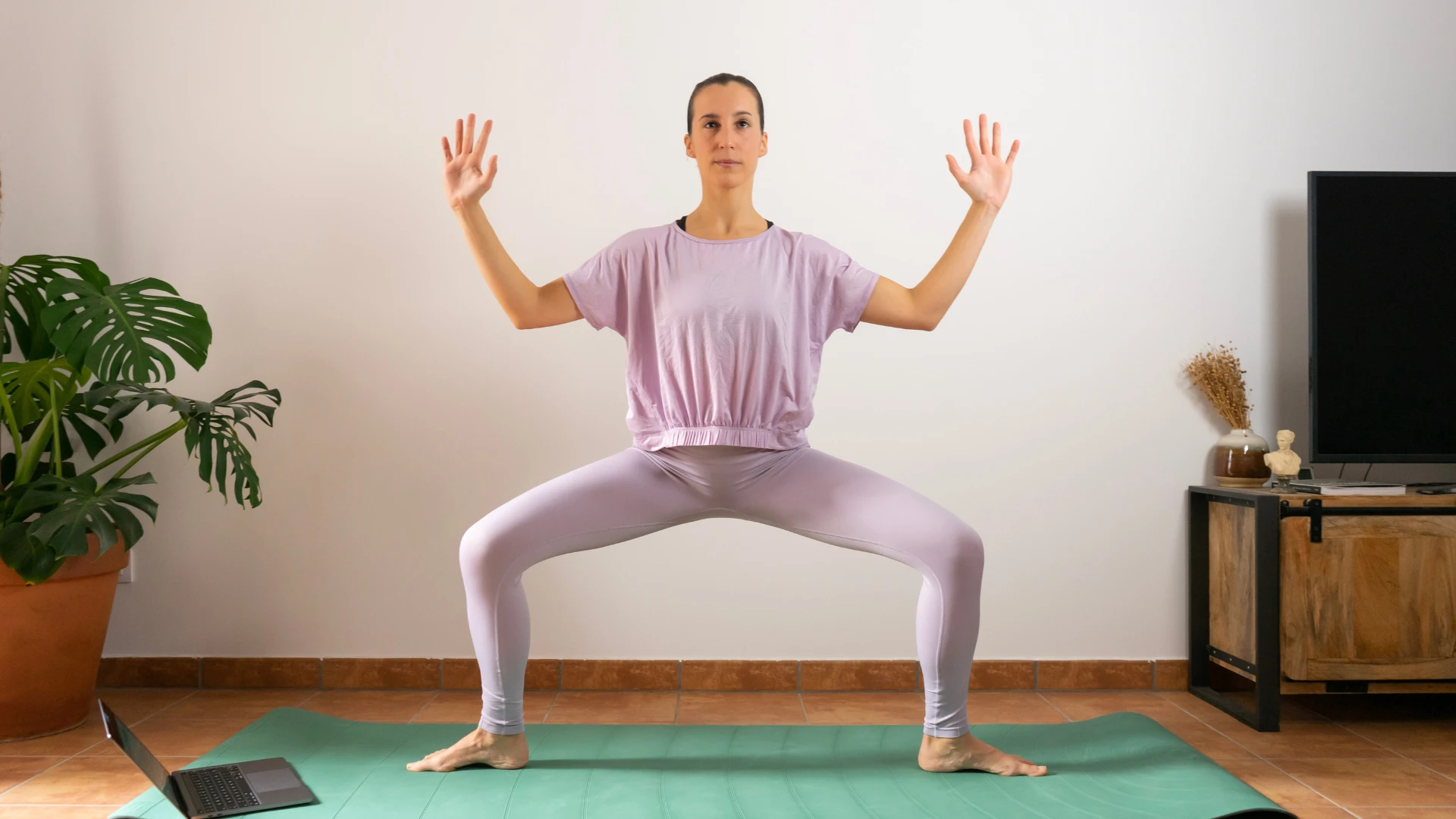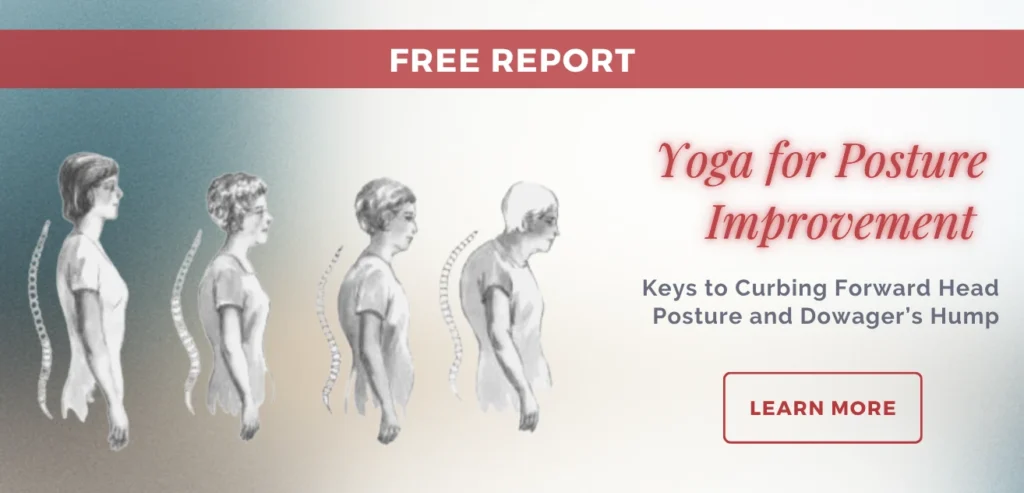Is Your Yoga Practice Rewriting Your DNA? The Science of Longterm Transformation

When you roll out your yoga mat and begin to breathe more deeply, settling into your practice, something extraordinary begins happening inside every cell of your body.
While you’re focused on the finer mechanics of practice, breath, and presence, your genes are receiving powerful signals that influence which ones get activated and which ones remain dormant.
This isn’t metaphorical or wishful thinking—new studies are indicating that yoga practice doesn’t just make you feel better temporarily; it literally rewrites your genetic expression in ways that promote healing, reduce inflammation, and support healthy aging at the molecular level.
Within hours of a single yoga session, gene expression changes, some studies suggest. This can create a cascade of effects that can influence our health for days and even weeks after each practice.
If you are a regular yoga practitioner, you will have experienced yoga’s profound effects on our physical, mental, and emotional wellbeing, Exciting new emerging research on the effects of yoga on gene expression provides fascinating insight into just how that happens.
It is well worth educating yourself about this new emerging research, since it gives a powerful insight into how yoga rewrites the entire cellular symphony of our body.
Understanding Gene Expression: Your Cellular Symphony
To appreciate the magnitude of what happens during your yoga practice, it’s helpful to understand that your genes aren’t fixed instructions that determine your fate. Rather, they’re more like a vast library of possibilities that can be accessed and expressed differently depending on environmental signals, lifestyle choices, and practices like yoga.
Gene expression is the process by which your cells decide which genetic information to activate and translate into proteins that influence your health, mood, energy, immune function, and aging process. Think of it as your cellular orchestra, where yoga practice acts as a skilled conductor, directing which instruments play when and how loudly.
This means that identical twins with the same DNA can have dramatically different health outcomes based on how their genes are expressed throughout their lives. Environmental factors, stress levels, diet, movement practices, and mind-body interventions like yoga can all influence which genes get turned on or off, creating what scientists call “epigenetic” changes—modifications that affect gene activity without changing the underlying DNA sequence.
The Inflammation Revolution: Yoga’s Anti-Inflammatory Orchestra
Perhaps the most significant discovery in recent yoga research is the practice’s powerful ability to regulate inflammatory gene expression. Chronic inflammation lies at the root of most age-related diseases, from cardiovascular disease and diabetes to Alzheimer’s and cancer. When your immune system remains in a state of persistent activation, it creates a biological environment that accelerates aging and increases disease risk.
The landmark research that started this field was a 2016 pilot study that examined chronically stressed women who participated in an eight-week yoga program. What researchers discovered was remarkable: yoga practice didn’t just help these women feel more relaxed and emotionally balanced—it actually changed the expression of genes involved in inflammatory processes. Specifically, the practice reduced methylation of the TNF (tumor necrosis factor) gene, effectively turning down the volume on one of the body’s primary inflammatory signals.
But this was just the beginning. Subsequent studies have revealed that yoga consistently downregulates entire networks of pro-inflammatory genes, including interleukin-6 (IL-6), nuclear factor kappa B (NF-κB), and various cytokines that contribute to chronic inflammation. Simultaneously, yoga upregulates anti-inflammatory genes such as transforming growth factor beta (TGF-β) and regulatory T-cell markers like FoxP3, creating a comprehensive shift toward reduced inflammation at the cellular level.
What makes this particularly fascinating is the speed at which these changes occur. While we might expect genetic changes to take months or years to manifest, research shows that significant alterations in gene expression can be measured within just three hours of a yoga session. One study found that yoga produced three times more gene expression changes than control activities like walking or listening to music, suggesting that there’s something uniquely powerful about the combination of movement, breath, and mindfulness that characterizes yoga practice.
The Stress Response Revolution: Reprogramming Your Cellular Stress Network

Your stress response system, while essential for survival, can become chronically overactivated in modern life, leading to harmful changes in gene expression that accelerate aging and increase disease risk. Chronic stress upregulates genes involved in inflammation, suppresses immune function genes, and creates a cellular environment that promotes disease and premature aging.
Yoga practice appears to fundamentally reprogram this stress response at the genetic level. Research shows that regular yoga practice downregulates genes in the hypothalamic-pituitary-adrenal (HPA) axis, the body’s primary stress response system. This means that yoga practitioners don’t just feel less stressed—their cells literally respond to stressors differently, expressing genes that promote resilience rather than inflammatory damage.
The practice also upregulates genes involved in the parasympathetic nervous system, often called the “rest and digest” response. This genetic reprogramming helps explain why regular yoga practitioners often report feeling more calm and centered even when facing significant life challenges. Their cells have been trained, through consistent practice, to express genes that support equanimity rather than reactivity.
Immune System Renaissance: Yoga’s Genetic Immune Boost
Your immune system is perhaps the most complex genetic orchestra in your body, with thousands of genes coordinating to protect you from threats while avoiding autoimmune reactions that could harm healthy tissue. Yoga practice appears to optimize this intricate system by influencing the expression of genes involved in both innate and adaptive immunity.
Studies have shown that yoga upregulates genes involved in immune surveillance and pathogen recognition while downregulating genes that contribute to autoimmune inflammation. This creates what researchers describe as “immunological balance”—a state where your immune system remains vigilant against real threats while avoiding the chronic activation that contributes to autoimmune diseases and systemic inflammation.
Particularly intriguing is yoga’s effect on regulatory T-cells, specialized immune cells that help maintain tolerance and prevent autoimmune reactions. Yoga practice increases expression of genes like FoxP3 that are essential for regulatory T-cell function, potentially explaining why many people with autoimmune conditions report improvements in their symptoms after beginning a consistent yoga practice.
The practice also influences genes involved in cellular immunity, including natural killer cells and cytotoxic T-lymphocytes that help identify and eliminate abnormal cells, including potential cancer cells. This enhanced immune surveillance may contribute to yoga’s documented protective effects against various forms of cancer.
The DNA Repair and Longevity Connection: Yoga as Genetic Maintenance
One of the most exciting areas of recent research involves yoga’s effects on genes responsible for DNA repair and cellular maintenance. Every day, your cells accumulate damage from environmental toxins, metabolic processes, and normal wear and tear. Your body has sophisticated repair mechanisms to fix this damage, but these systems can become less efficient with age or chronic stress.
Yoga practice upregulates several genes involved in DNA repair, including OGG1 (8-oxoguanine DNA glycosylase) and p53, often called the “guardian of the genome” for its role in detecting and repairing DNA damage. This enhanced genetic repair capacity may help explain yoga’s association with healthy aging and longevity.
The practice also influences telomerase activity, the enzyme responsible for maintaining telomeres—the protective caps on chromosomes that shorten with age. While the research is still emerging, some studies suggest that yoga practice may help preserve telomere length, potentially slowing cellular aging processes.
Additionally, yoga upregulates genes involved in mitochondrial function, including AMPK (AMP-activated protein kinase) and SIRT1 (sirtuin 1), which are crucial for cellular energy production and metabolic health. These genetic changes may contribute to the increased energy and vitality that many yoga practitioners report.
Neuroplasticity and Brain Health: Yoga’s Genetic Brain Boost
The brain’s ability to change and adapt throughout life—neuroplasticity—is largely governed by gene expression patterns that can be influenced by lifestyle practices like yoga. Recent research has identified specific genetic pathways through which yoga enhances brain health and cognitive function.
Yoga practice upregulates brain-derived neurotrophic factor (BDNF), often called “Miracle-Gro for the brain” because it promotes the growth and survival of neurons. The practice also influences expression of microRNAs like miR-133B that are involved in neuroplasticity and learning. These genetic changes may help explain why yoga practitioners often report improved memory, focus, and emotional regulation.
The practice also downregulates genes associated with neuroinflammation, which is increasingly recognized as a major contributor to neurodegenerative diseases like Alzheimer’s and Parkinson’s. By reducing inflammatory gene expression in the brain, yoga may help protect against cognitive decline and support healthy brain aging.
The Epigenetic Inheritance: How Your Practice May Benefit Future Generations
Perhaps the most profound implication of yoga’s effects on gene expression is the potential for these changes to be passed on to future generations through epigenetic inheritance. While we inherit our basic DNA sequence from our parents, we also inherit epigenetic modifications that influence how those genes are expressed.
Research suggests that the beneficial genetic changes induced by yoga practice—reduced inflammation, enhanced stress resilience, improved immune function—may be partially transmissible to offspring. This means that your yoga practice may not only benefit your own health but could potentially contribute to the health and resilience of your children and grandchildren.
While this area of research is still developing, it adds a profound dimension to our understanding of yoga’s impact. Your commitment to practice may be creating positive genetic legacies that extend far beyond your own lifetime.
The Integration of Ancient Wisdom and Modern Science
What’s particularly remarkable about this research is how it validates ancient yogic understanding through modern scientific methods. Traditional yoga texts have long described the practice as working at the most fundamental levels of existence, creating transformations that extend far beyond the physical body. The discovery that yoga literally changes gene expression provides a biological mechanism for these traditional claims.
The research also helps explain why yoga’s benefits tend to be cumulative and long-lasting. Unlike interventions that provide temporary relief, yoga appears to create fundamental changes in how your cells function, establishing new patterns of gene expression that support health and wellbeing on an ongoing basis.
This doesn’t diminish the importance of yoga’s spiritual and philosophical dimensions—rather, it shows how these aspects of practice may have measurable biological correlates. The integration of breath, movement, and mindfulness that characterizes yoga appears uniquely suited to creating positive genetic changes that support both physical health and psychological wellbeing.
Practical Implications for Your Practice
Understanding yoga’s effects on gene expression can inform how you approach your practice. While even a single yoga session can create measurable genetic changes, the research suggests that consistency is key to establishing lasting beneficial patterns of gene expression. Regular practice appears to create cumulative effects, with genetic changes becoming more pronounced and stable over time.
The research also suggests that the integrative nature of yoga—combining physical postures, breathing practices, and mindfulness—may be crucial for its genetic effects. Studies comparing yoga to other forms of exercise consistently find that yoga produces more extensive changes in gene expression, suggesting that the contemplative aspects of practice are not just pleasant additions but may be essential components of yoga’s transformative power.
This doesn’t mean you need to practice for hours every day to gain benefits. Studies showing significant genetic changes have used practice schedules ranging from 45 minutes twice weekly to daily sessions of various lengths. What seems most important is consistency and the integration of yoga’s multiple dimensions rather than focusing solely on the physical postures.
The Future of Yoga Research and Personalized Practice
As our understanding of yoga’s genetic effects continues to evolve, we may see the development of more personalized approaches to practice based on individual genetic profiles. Future research may identify which specific genetic variations respond best to different styles of yoga, breathing practices, or meditation techniques.
This could lead to more targeted therapeutic applications of yoga for specific conditions, with practices designed to optimize particular genetic pathways involved in healing and recovery. It may also help us understand why some people respond more dramatically to yoga practice than others, and how to modify practice to maximize benefits for different constitutional types.
However, the current research suggests that yoga’s benefits are remarkably universal, with positive genetic changes observed across diverse populations and health conditions. This supports the traditional understanding of yoga as a comprehensive practice that supports the fundamental processes of life and health.
Your Genetic Legacy Through Practice
Every time you step onto your yoga mat, you’re participating in an ancient practice that modern science reveals to be a sophisticated form of genetic medicine. Your breath, your movement, your mindful attention are all sending powerful signals to your genes, directing them toward expressions that support health, resilience, and longevity.
This research doesn’t diminish the mystery and profound personal transformation that yoga can catalyze—it simply provides a window into the biological mechanisms through which this transformation occurs. Understanding that your practice is literally rewriting your genetic expression at the cellular level may deepen your appreciation for yoga’s power and your commitment to consistent practice.
As you continue your yoga journey, remember that you’re not just stretching your muscles or calming your mind—you’re conducting a cellular symphony that promotes healing, resilience, and vitality at the most fundamental level of your being. Your genes are listening to your practice, and they’re responding with remarkable intelligence to support your health and wellbeing in ways that science is only beginning to understand.
In a world where we’re often told that our genes determine our destiny, yoga research offers a profoundly empowering message: through conscious practice, we can influence how our genes express themselves, creating positive changes that ripple through every aspect of our health and potentially even into future generations. Your mat isn’t just a place for physical practice—it’s a laboratory for genetic transformation and a gateway to your most vital, resilient self.
Also, read...
How to Overcome the 4 Most Common Yoga Teacher Challenges: The Power of Niche Building
Yoga Teachers: Are You Practicing With Your Students?
To Twist or Not to Twist? Yoga for Osteoporosis
Related courses

Eva Norlyk Smith, Ph.D., C-IAYT, is the founder and President of YogaUOnline. She is a lead trainer in YogaUOnline’s Yoga Wellness Educator program, an RYT-300 Yoga Alliance-approved training that focuses on giving teachers the skills they need to offer wellness courses and work with older beginners.
Eva is a trained yoga therapist at the 1,000-hour level as well as a trained bodyworker at the 500-hour level. She is the co-author of several books, including Light Years Younger with Dr. David J. Goldberg.
- Loh, R., Hu, J., Yeoh, S., et al. (2025). Effects of Yoga on Gene Expression: A Systematic Review of Randomised Controlled Trials. BMC Complementary Medicine and Therapies, 25(4):1209. https://pmc.ncbi.nlm.nih.gov/articles/PMC12094062/
- Selvaraj Giridharan, B., et al. (2023). Exploring the Potential Clinical Benefits of Yoga on Epigenetics and Gene Expression: A Narrative Review. Journal of Integrative Medicine, 21(6):421-436. https://pmc.ncbi.nlm.nih.gov/articles/PMC10775846/
- Harkess, K. N., et al. (2016). Preliminary indications of the effect of a brief yoga intervention on markers of inflammation and DNA methylation in chronically stressed women. Translational Psychiatry, 6, e965.
- Yoga and its effect on sperm genomic integrity, gene expression, and telomere length. (2024). Nature Scientific Reports, 14, 62380. https://www.nature.com/articles/s41598-024-62380-w
- Kumar, A., et al. (2025). Transcriptome profiling after Sudarshan Kriya Yoga and its practice. Current Research in Physiology, 6:28. https://www.sciencedirect.com/science/article/pii/S2949834125000078
- Bhargava, S., et al. (2023). Yoga maintains Th17/Treg cell homeostasis and reduces the rate of cellular aging-related transcriptome changes. Nature Scientific Reports, 13(1):1496. https://www.nature.com/articles/s41598-023-42231-w
- Preventing Chronic Disease: Yoga May Alter Gene Expression Linked to Inflammation (Jan 2025). YogaUOnline. https://yogauonline.com/yoga-health-benefits/yoga-for-depression-and-anxiety/preventing-chronic-disease-yoga-may-alter-gene-expression-linked-to-inflammation/



